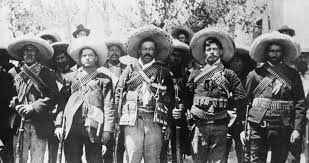In the realm of revolutionaries and bandits, one name stands out: Pancho Villa. Born as José Doroteo Arango Arámbula in 1878, Villa’s journey from fugitive to revolutionary is a tale of resilience, courage, and a fight for justice. Let us delve into the gripping story of the man who would be remembered as the “Robin Hood of Mexico.”
The Mexican Revolution: Chaos Amid Overthrow
The year was 1910, and Mexico was in the clutches of the Mexican Revolution, an uprising against the dictatorship of Porfirio Díaz. While the revolution succeeded in removing Díaz from power, the aftermath plunged the country into chaos. Francisco Madero, a leader of the revolution, took over the presidency but was soon assassinated by Victoriano Huerta in 1913.
Amid the power struggle that ensued, Pancho Villa emerged as a prominent figure, leading a revolutionary faction known as the División del Norte, or Division of the North. Villa, a former ally of both Madero and Huerta, found himself accused of thievery by Huerta. Though narrowly escaping execution, Villa was sentenced to prison until he managed to escape with the help of Madero.
A Series Of Clashes And Conflicts
With Madero’s untimely demise, Huerta became the new dictator of Mexico. Determined to oust Huerta, Villa joined forces with another revolutionary named Venustiano Carranza. Together, they fought against Huerta’s regime, but their alliance was short-lived as conflicts between revolutionaries persisted.
Villa’s battles brought him both allies and enemies, not only in Mexico but also in the neighboring United States. Despite his fugitive past, Villa relished being photographed and even signed a contract with Hollywood’s Mutual Film Company to document his leadership in battles. For a time, he even served as the provisional governor of the state of Chihuahua.
By 1914, Huerta was overthrown, and Carranza assumed leadership. Yet, peace remained elusive as tensions escalated between Villa and Carranza.
The Complicated Legacy Of Pancho Villa
Pancho Villa, known for his fighting skills, became disillusioned with Carranza’s rule and rebelled with the backing of the U.S. government. However, when President Woodrow Wilson withdrew his support of Villa, he retaliated by kidnapping and killing Americans, resulting in a sharp decline in his popularity.
While Villa continued his guerrilla campaign against Carranza, the Mexican Revolution reached its end in 1920 with Carranza’s assassination. Adolfo de la Huerta succeeded Carranza as president and, seeking to bring an end to the conflicts, offered Villa retirement in exchange for a pardon, a ranch, and a pension.
Sadly, Villa’s retirement was short-lived. In 1923, he was killed by a group of assassins who fired at his car. Although a man named Jesus Salas Barraza confessed to the assassination, it is widely believed that higher-ranking officials orchestrated the plot.
The legacy of Pancho Villa is one of legend and controversy. While he staunchly advocated for the poor and challenged the oppressive ruling class of Mexico, his banditry and violent clashes tarnished his reputation. Yet, Villa’s unwavering fight for justice and liberty resonates to this day.
